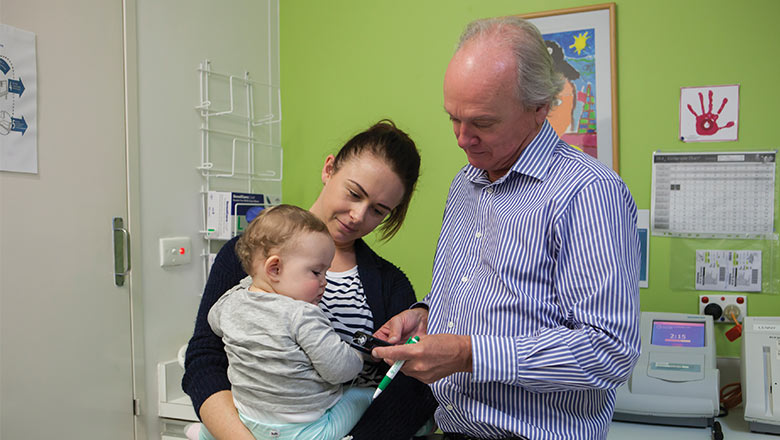Search
Research
Clinical evaluation of a noninvasive alarm system for nocturnal hypoglycemiaThe aim of this study was to evaluate the performance of a prototype noninvasive alarm system (HypoMon) for the detection of nocturnal hypoglycemia.
Research
Western Australian Children’s Diabetes DatabaseThis register was established at Princess Margaret Hospital in 1987 which stores data on all consenting patients attending the hospital’s diabetes clinic.
Research
Epidemiology of T2DM in childhood and associated disease complicationsInvestigating the incidence of childhood Type 2 Diabetes in the Western Australian community
Research
Intranasal Insulin Trial IIIf successful, this vaccine could prevent type 1 diabetes and the need for daily insulin injections in people at risk.
Research
Adolescent type 1 diabetes cardio-renal Intervention trialAn international clinical trial looking at intervention with Angiotensin Converting Enzyme Inhibitors (ACEI), Statins, or a combination of both
Research
Safety evaluation of closed loop system during hypoglyaemic stimuliThe purpose of this study is to evaluate the safety of new system called the Medtronic MinimedTM 670G that has been designed for long term outpatient use.

News & Events
The hidden burden of diabetesWhen Jodie and Brad Scott welcomed their fourth child Heath into the world, they were prepared for the many sleepless nights that come with caring for newborns.

News & Events
Improving the lives of kids with Type 1 DiabetesDiabetes research got a huge boost when the WA Children’s Diabetes Research and Education Centre for Research Excellence opened late last year.
Research
Long-term cost-effectiveness of Dexcom G6 real-time continuous glucose monitoring system in people with type 1 diabetes in AustraliaReal-time continuous glucose monitoring allows patients with diabetes to adjust insulin dosing, potentially improving glucose control. This study aimed to compare the long-term cost-effectiveness of the Dexcom G6 rt-CGM device versus self-monitoring of blood glucose and flash glucose monitoring in Australia in people with type 1 diabetes.
Research
Dietary protein affects both the dose and pattern of insulin delivery required to achieve postprandial euglycaemia in Type 1 diabetes: a randomized trialA high-protein meal requires ~50% more insulin to maintain euglycaemia than a low-protein meal that contains the same quantity of carbohydrate
